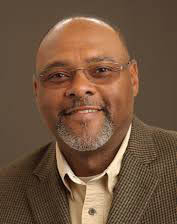Facilitating a Conversation about Race
 By Karen M. Turner
By Karen M. Turner
AEJMC Standing Committee on Teaching
Associate Professor
Department of Journalism
Temple University
kturner@temple.edu
(Article courtesy of AEJMC News, March 2017 issue)
I often hear from colleagues who say talking about diversity, and race in particular, is difficult. However, by being silent about race in the classroom, our students may take this as a cue that such discussions should be avoided. Our political environment has provided us with a challenge and opportunity to bring hot-button topics into our classrooms in meaningful ways. Whether we’re talking about the Black Lives Matter movement or police shootings and killings or racial and religious refugees, the news is filled with politicized issues ripe for discussion.
Several years ago I developed and began teaching a module to upper-level students, dealing with journalistic biases, as a way to contextualize a race/diversity discussion. We need to have conversations about race so we can improve the way we report about communities of color. We teach our journalists-in-training to strive for objectivity. But the reality is we see the world through our own eyes and experiences – our various dimensions of diversity such as race, class, ability, age, political affiliation, sexual orientation, etc. We need to recognize our biases. And we need to help our students as future communication professionals do the same. Such understanding can lead to better reporting. Knowing one’s biases in this context can foster a critical analysis of how identity impacts journalistic storytelling. I am not suggesting one module devoted to this difficult topic is adequate. I am suggesting it is a start.
Create a positive classroom climate. I usually wait to teach the race module midway through the semester. By this point in the course we are familiar and comfortable with one another. As instructor, I work to create a welcoming classroom climate where all points of view are valued and open for critical reflection.
Explain why we need to have conversations about race. It is important early in the discussion to explain to the students why I introduce what could be for some an uncomfortable conversation. My reasons are simple:
• the student population and the population they will serve as journalists are becoming more and more diverse;
• we need to function in an increasingly multicultural workplace;
• as a society we don’t do race-talk well but it’s important for developing racial consciousness, improving race relations and for our purposes better reporting;
• honest race talk is a powerful way to dispel stereotypes and biases*;
• I am committed to stepping outside my comfort zone to facilitate difficult conversations.
Once I say why it is important to bring a race discussion into the curriculum, I set ground rules and discuss what I hope to accomplish. There are three main objectives:
• begin an honest dialogue about race;
• avoid a monologue where we state and restate our initial positions – LISTEN;
• recognize/understand our own biases and how they may impact our reporting.
Exercise 1: I begin by asking the students to list all the dimensions of diversity that explain who they are. I get things started by describing myself. When students see I am willing to share, it encourages them to take the exercise seriously. I don’t ask the students to talk publicly about their list. I tell them to keep the list and add to it throughout the rest of the semester.
Discuss our racial realities. At this point I discuss and show verdict video from the 1995 O.J. Simpson trial demonstrating how Americans saw this story very differently depending on their racial background. Journalist Ted Koppel said about the trial… “I think that race is the great unresolved issue in this country. … And in many respects, the O.J. Simpson trial, coming as it did toward the end of the 20th Century, served as an exclamation mark.”
Exercise 2: For the second exercise, I assign the students to diverse groups of three or four. I ask them to think about the following question then share their answers with their group. “Write a few words describing when and what happened the first time you became aware of your racial/ethnic identity. This can be a personal experience or something you witnessed. How do you think this event has influenced your present attitudes about race and race-related issues? How might this impact your reporting?” As the students are getting into their groups I share with them my first racial awareness memory, which happened in kindergarten. Many students have never thought about these questions before. They usually become very engaged to the point that I have to cut short the group discussions.
Encourage quality reporting. I end the module talking about storytelling approaches to keep in mind when reporting, such as being mindful of visuals used; word choices; who’s interviewed and who’s not; and framing the story. Following the module, I distribute an anonymous (name optional) three-question survey to be submitted by the next class. I ask: (1) In what ways, if any, has your thinking or awareness of race and stereotypes changed? (2) To what extent have these activities and discussion made you reflect on your own position and identity in society? (3) In what ways, if any, have or will these activities and discussion impact your approach to reporting? The feedback has been positive and informative.
Challenge ourselves to step outside our comfort zone. It can be uncomfortable teaching a race module. However our students must have the tools to report accurately on issues related to race. This process starts in our classrooms where we can help our students understand, recognize and address journalistic biases. Honest and accurate reporting in this climate of “fake” news is imperative. I often tell my students they will be the eyes and ears of their public and therefore have an awesome responsibility to produce quality journalism. I remind them our democracy depends on it.
*A good resource is Derald Wing Sue’s, Race Talk and the Conspiracy of Silence: Understanding and Facilitating Difficult Dialogues on Race. Also see my 2015 commentary, “Journalists’ Biases Must Be Part of Frank Conversation on Race” (http://mije.org/journalists%E2%80%99-biases-must-be-part-frank-conversation-race)

